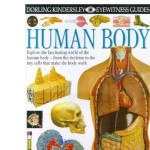Category: Science
Created by: tahira rafiq
Number of Blossarys: 5
 English (EN)
English (EN) Hungarian (HU)
Hungarian (HU) Norwegian Bokmål (NO)
Norwegian Bokmål (NO) Slovak (SK)
Slovak (SK) Indonesian (ID)
Indonesian (ID) German (DE)
German (DE) Chinese, Simplified (ZS)
Chinese, Simplified (ZS) Spanish (ES)
Spanish (ES) French (FR)
French (FR)
Large intestine (colon) has the major function of absorbing most of the water remaining in food residue that has not been absorbed by the small intestine while feces are formed. The large intestine ...
Liver is the largest gland in the human body. It is divided, although incompletely, into four lobes. Right lobe is the largest. Liver is attached to the inferior surface of the diaphragm and to the ...
Oral cavity (mouth) contains teeth, tongue, and major and minor salivary glands. It forms the food bolus and aids the swallowing of the food bolus. The tongue manipulates food to aid chewing and ...
Hair begins in the dermis layer of the skin and pushes outward. It is made up primarily of protein keratin. Unlike other portions of the body, the hair is only alive at the root, where the sebaceous ...
Facial nerve is the 7th cranial nerve( there are 12 cranial nerves) and it is the great motor nerve of the head. It innervates all the muscles of facial expression and several other muscles. It ...
Autonomic nervous system manages the involuntary activities of smooth muscles, the muscle fibres of internal organs, including the intestines, sweat glands, airways, heart, and blood vessels. The ...
These are part of the urinary system, which removes wastes from the body, the job they do is too often described merely as one of "trash disposal". Not only do they chemically filter the blood to ...








